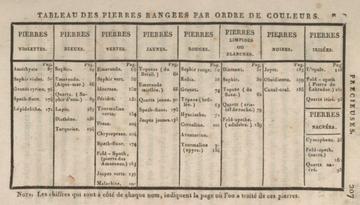Series Convenors: Dr Alex Aylward, Professor Erica Charters, Professor Mark Harrison, Dr Catherine M Jackson, Dr Sloan Mahone

Cyprien Prosper-Brard, Treatise on Precious Stones (Paris, 1808)
Seminars in the History of Science, Medicine, and Technology
Dr Michael Bycroft (Warwick University)
Evaluation in the Age of Production: The Origins of Gemmology in France, c. 1770-1830
For historians of European science and technology, the decades around 1800 are usually remembered for the emergence of new modes of production. But technical knowledge was also driven by new modes of evaluation—new ways of distinguishing between the good, the bad and the ugly in the material world. This may be illustrated by gemstones, an unusually valuable material that underwent profound social and intellectual changes in the period sometimes known as the second scientific revolution. Mineralogists developed a new classification of gems based on crystal form and chemical composition rather than visual properties such as colour and brilliance. The new mineralogy was the basis for a new field of practical knowledge, the “science of precious stones applied to the arts.” This field used the latest findings in the natural sciences to determine the commercial and aesthetic value of gems, whether in the workshop, the marketplace, the court of law, or the collector’s cabinet. Evaluation, as much as production, was part of the origin of modern science.